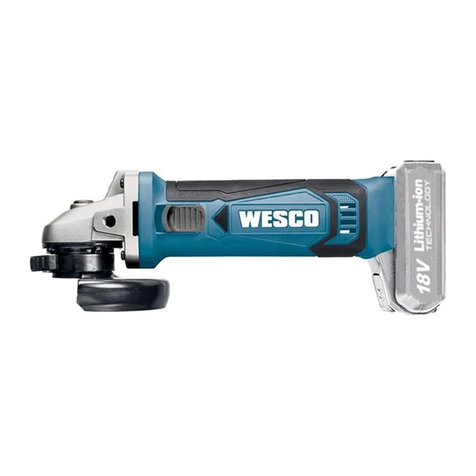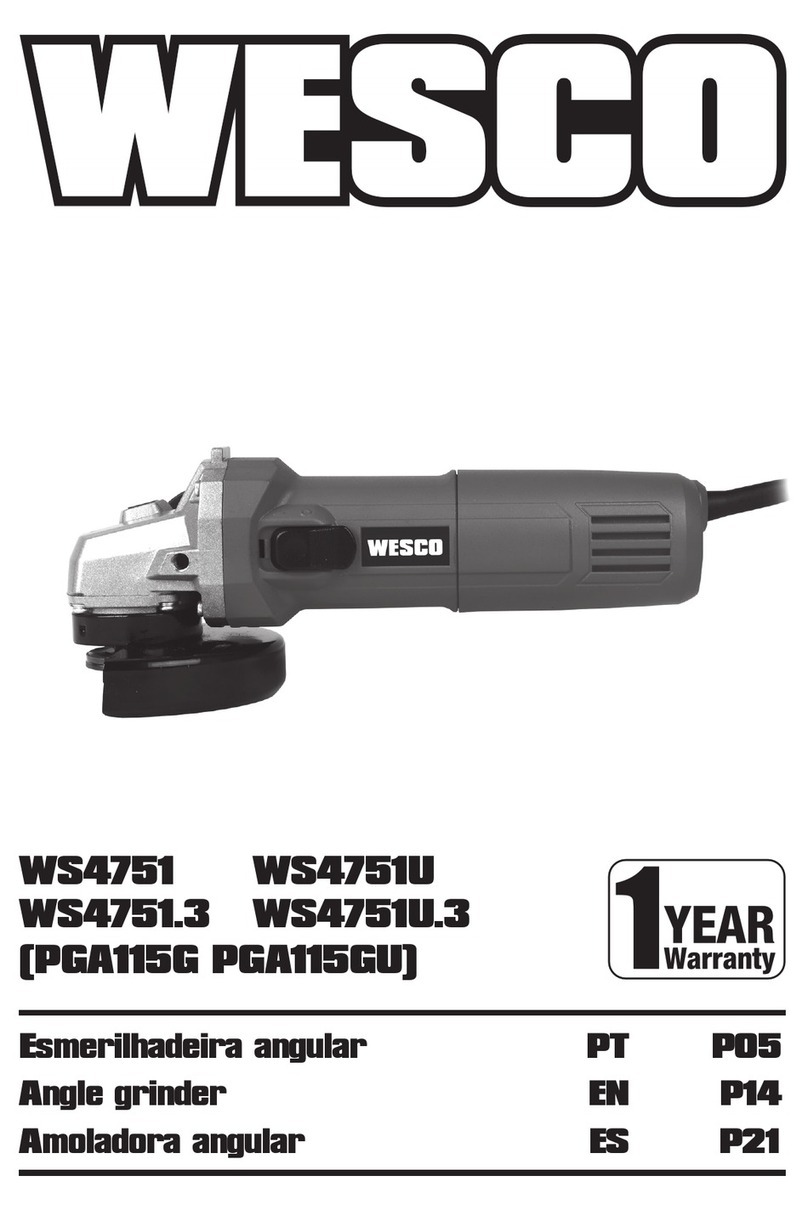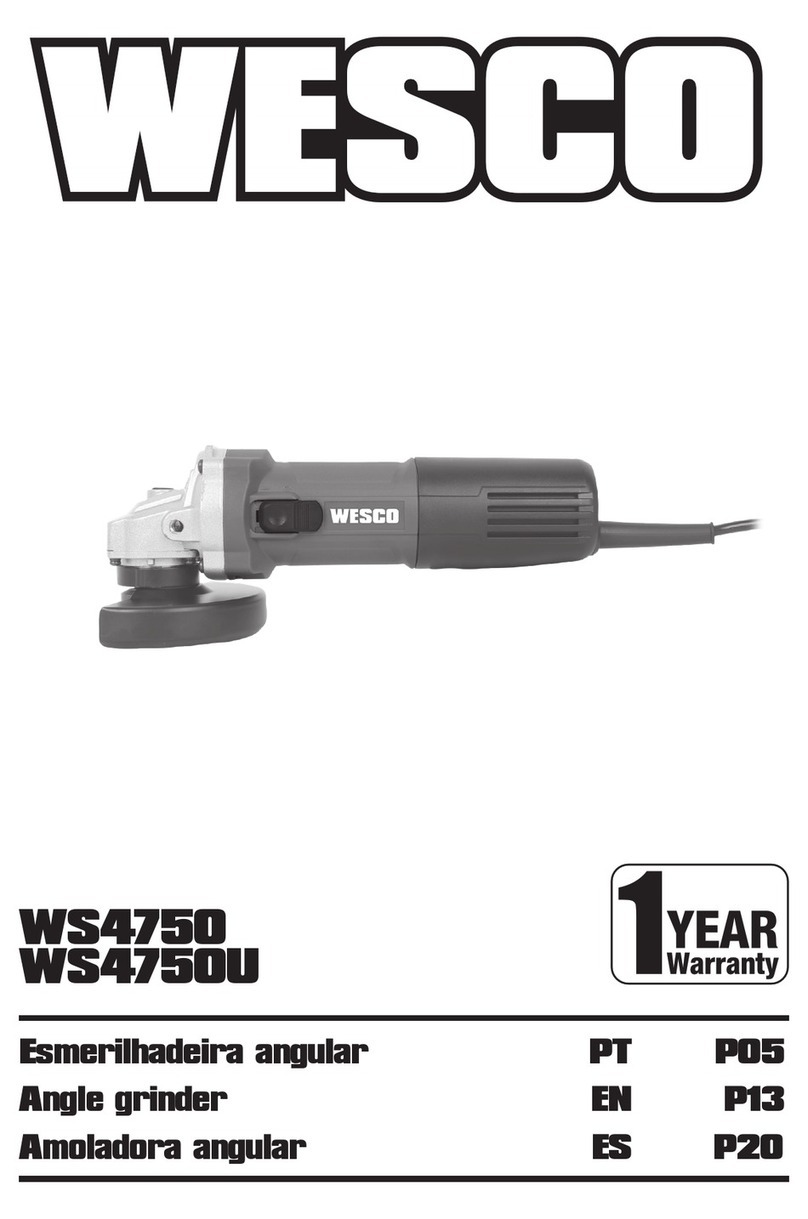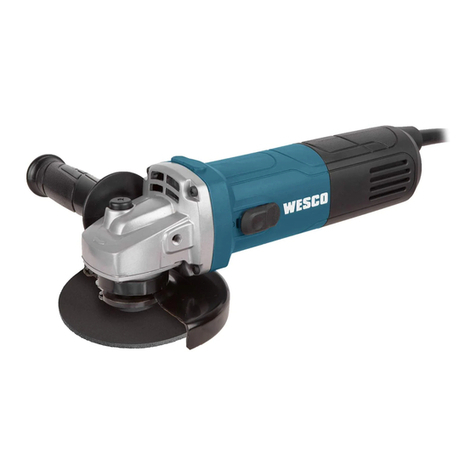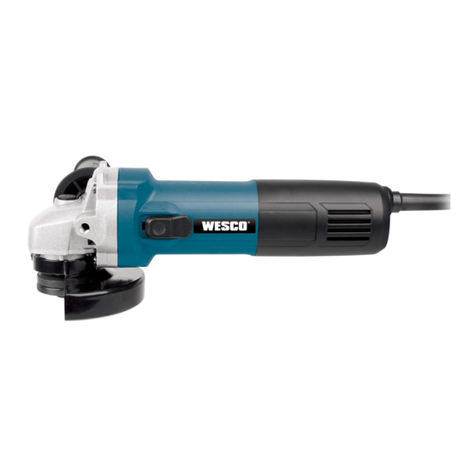
5
PT
INSTRUÇÕES DE
SEGURANÇA
ATENÇÃO! Quando usar ferramentas elétricas,
para reduzir o risco de fogo, choque eléctrico
e danos pessoais, deve sempre respeitar precauções de
segurança básicas, incluindo as seguintes.
Leia todas estas instrução antes de
tentar utilizar este produto e guarde estas
instruções.
Este equipamento não deve ser usado por pessoas
(incluindo crianças) com capacidades físicas, sensoriais
ou mentais reduzidas ou com falta de experiência e
conhecimento, a menos que sob supervisão ou que tenham
recebido instrução referente ao uso do equipamento por
uma pessoa responsável por sua segurança .
Operação segura
1. -Mantenha a área de trabalho limpa
-Áreas e bancadas desarrumadas são propícias a
causar danos/ferimentos.
2. -Considere o ambiente da sua área de trabalho
-Não exponha as ferramentas à chuva.
-Não use ferramentas em locais húmidos ou
molhados.
-Mantenha a área de trabalho bem iluminada.
-Não use ferramentas na presença de líquidos ou
gases inflamáveis.
3. -Proteja-se contra choques elétricos
-Evite o contato do seu corpo com superfícies ligadas
à terra (por exemplo tubos, radiadores, refrigeradores).
4. -Mantenha outras pessoas à distância
-Não deixe pessoas (especialmente crianças) que não
estejam envolvidas no trabalho, tocar na ferramenta ou
no cabo de alimentação e mantenha-as longe da área
de trabalho.
5. -Armazene/guarde ferramentas inativas
-Quando não estão sendo usadas, as ferramentas
devem ser armazenadas num local seco e fechado,
fora do alcance de crianças.
6. -Não force as ferramentas
-Elas desempenharão o trabalho de forma melhor e
mais segura se usadas da maneira planeada.
7. -Use a ferramenta certa
-Não force ferramentas pequenas a fazer o trabalho de
uma ferramenta industrial.
-Não use ferramentas para objetivos não pretendidos;
por exemplo não use serras circulares para cortar
ramos de árvore ou troncos.
8. -Vista-se adequadamente
-Não use roupas soltas ou jóias, pois eles podem ser
apanhadas por peças móveis.
-Recomenda-se calçado antiderrapante ao trabalhar
ao ar livre.
-Use proteções para o cabelo, de forma a segurar o
cabelo comprido.
9. -Use equipamento de segurança; use óculos de
proteção
-Use máscaras faciais ou anti-pó, se os movimentos
do trabalho produzirem pó.
10. -Ligue o equipamento de extração de pó
-Se a ferramenta vier equipada para a conexão de
extração de pó e equipamento de recolha do mesmo,
assegure-se de que estes estão ligados e de que são
corretamente usados.
11. -Não abuse do cabo de alimentação
-Nunca puxe o cabo para desligar o aparelho da
tomada. Mantenha o cabo longe de calor, óleo e
extremidades afiadas.
12. -Faça trabalho seguro
-Quando possível, use uma morsa, um grampo ou
outro dispositivo de fixação para segurar a peça a ser
trabalhada. É mais seguro que usar a sua mão.
13. -Atenção na postura
-Mantenha postura e equilíbrio adequados a todo o
momento.
14. -Lide com as ferramentas com cuidado
-Mantenha as ferramentas cortantes afiadas e limpas,
para um desempenho melhor e mais seguro.
-Siga as instruções para lubrificar e mudar os
acessórios.
-Inspecione o cabo de alimentação periodicamente e
substitua-o se estiver estragado.
-Mantenha as pegas secas, limpas e sem óleo ou
gordura.
15. -Desligue as ferramentas
-Quando não estiver em uso, antes de ser ajustada
e quando se mudam os acessórios (como rebolos,
escovas e peças), as ferramentas devem ser
desligadas da fonte de energia.
16. -Retire chaves e peças de fixacao
-Forme o hábito de verificar se chaves aperto são
retirados da ferramenta antes de a ligar.
17. -Evite o arranque não-intencional
-Assegure-se de que o interruptor está na posição
“off” (desligado) antes de ligar a ferramenta à
eletricidade.
18. -Use extensões elétricas adequadas, quando trabalha
ao ar livre
-Quando a ferramenta for usada ao ar livre, use só
extensões destinadas ao uso externo.
19. -Esteja alerta
-Observe com atenção o que for fazer, use o bom-






